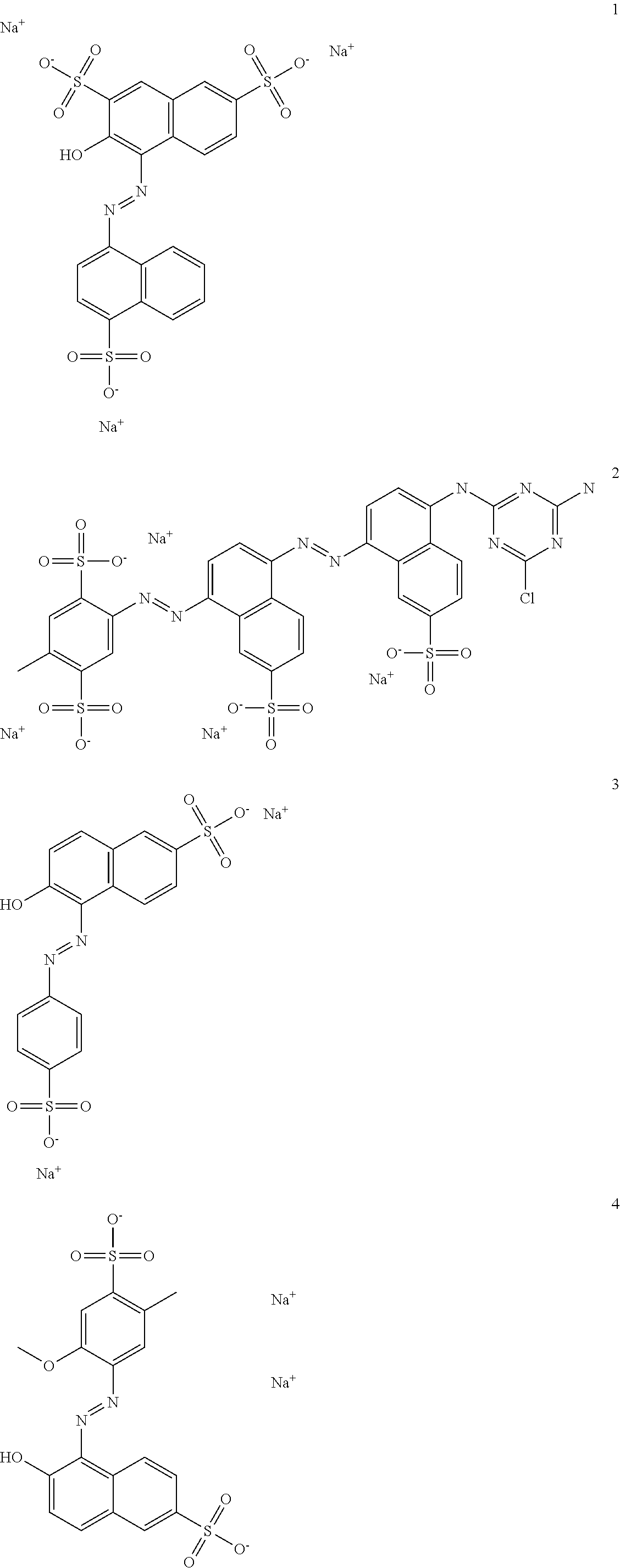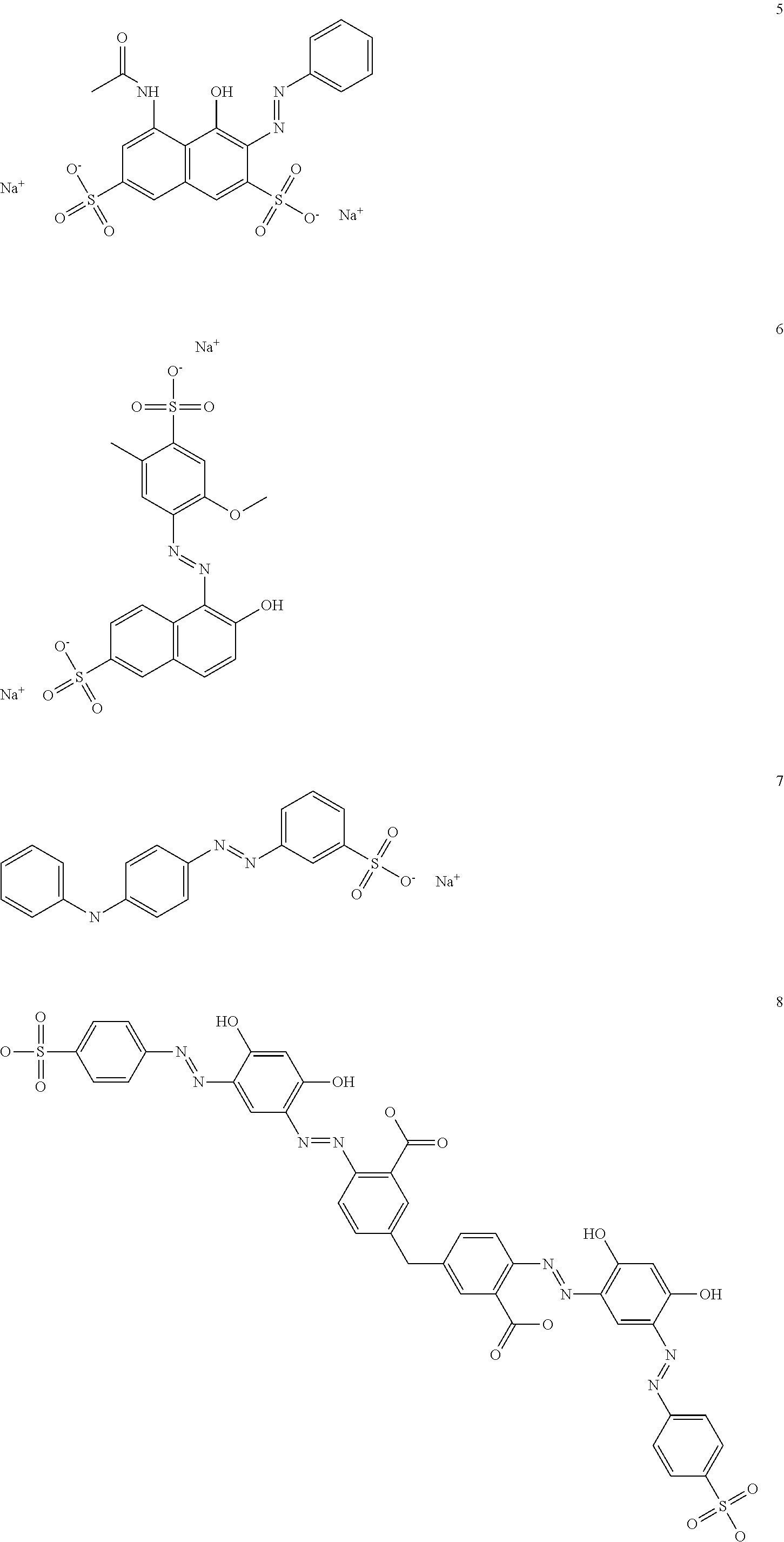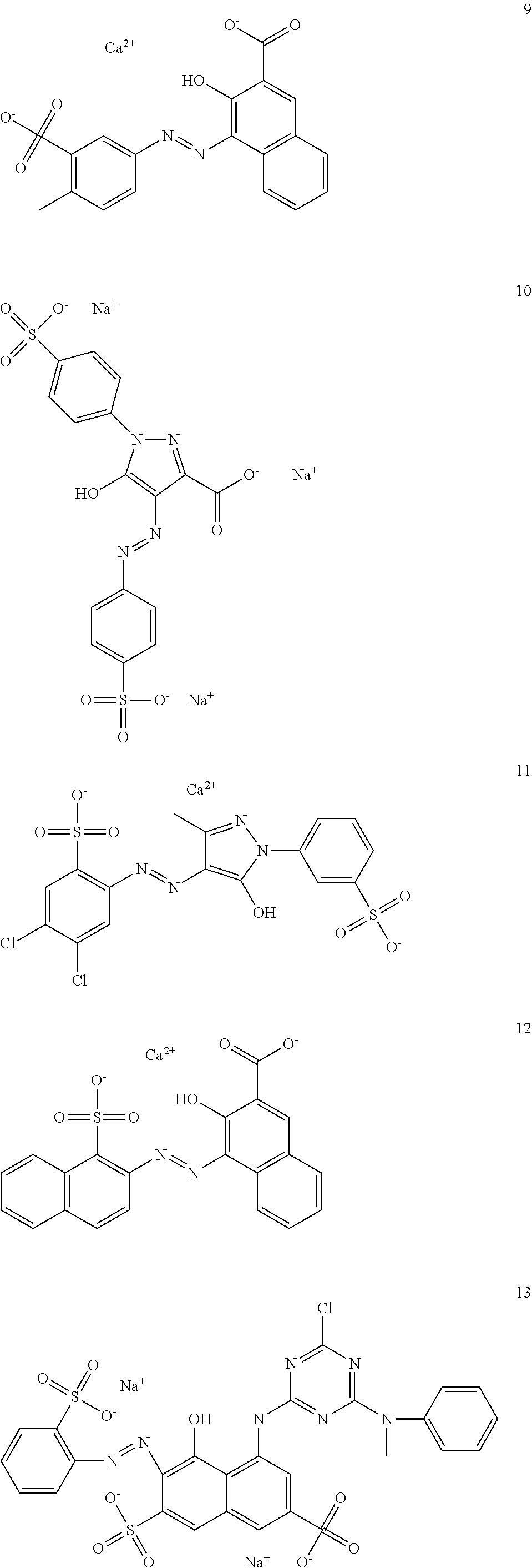Use of water-dispersible carotenoid nanoparticles as taste modulators, taste modulators containing water-dispersible carotenoid nanoparticles, and, method for taste modulation
a technology of water-dispersible carotenoid nanoparticles and taste modulators, which is applied in the direction of biocide, drug compositions, food shaping, etc., can solve the problems of adverse taste impression, adverse taste impression, and impairment of taste in fruit juice, in particular orange jui
- Summary
- Abstract
- Description
- Claims
- Application Information
AI Technical Summary
Benefits of technology
Problems solved by technology
Method used
Image
Examples
— example 1
Sample 1—Example 1
[0117]Water+500 mg / l of ACK+formulation (A11), corresponding to 1 ppm of beta-carotene (abbreviation: water / ACK / A11)
Sample 2—Example 2:
[0118]Water+500 mg / l of ACK+formulation (A13), corresponding to 1 ppm of lycopene (abbreviation: water / ACK / A13)
Sample 3—Example 3:
[0119]Water+500 mg / l of ACK+formulation (A12), corresponding to 1 ppm of beta-carotene (abbreviation: water / ACK / A12)
Sample 4—Example 4:
[0120]Water+500 mg / l of ACK+formulation (A11), corresponding to 1 ppm of beta-carotene, +2.3 mg / l of azo compound E10+azo compound 2.5 mg / l of E129
(abbreviation: water / ACK / A11 / E110 / E129)
Sample 5—Example 5:
[0121]Water+140 mg / l of ACK+350 mg / l of ASP+formulation (A11), corresponding to 1 ppm of beta-carotene
(abbreviation: water / ACK / ASP / A11)
Sample 6—Example 6:
[0122]Water+350 mg / l of ASP+formulation (A11), corresponding to 1 ppm of beta-carotene
(abbreviation: water / ASP / A11)
Sample 7—Example 7:
[0123]Water+140 mg / l of ACK+350 mg / l of ASP+formulation (A12), corresponding to 1 ppm ...
PUM
 Login to View More
Login to View More Abstract
Description
Claims
Application Information
 Login to View More
Login to View More - R&D
- Intellectual Property
- Life Sciences
- Materials
- Tech Scout
- Unparalleled Data Quality
- Higher Quality Content
- 60% Fewer Hallucinations
Browse by: Latest US Patents, China's latest patents, Technical Efficacy Thesaurus, Application Domain, Technology Topic, Popular Technical Reports.
© 2025 PatSnap. All rights reserved.Legal|Privacy policy|Modern Slavery Act Transparency Statement|Sitemap|About US| Contact US: help@patsnap.com



